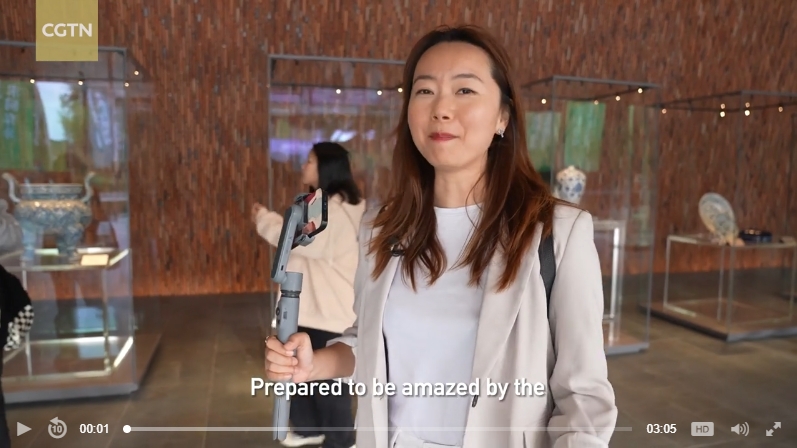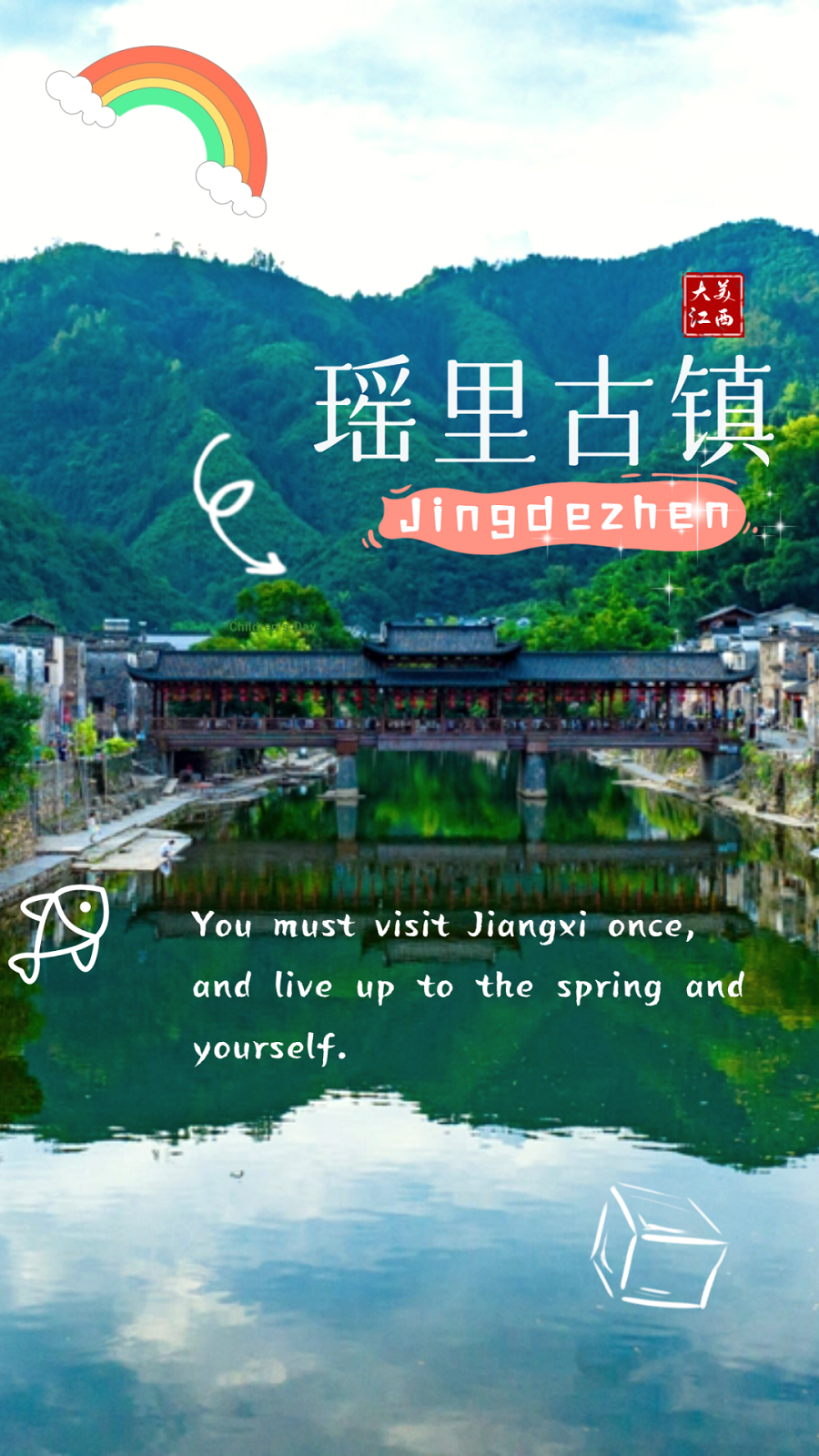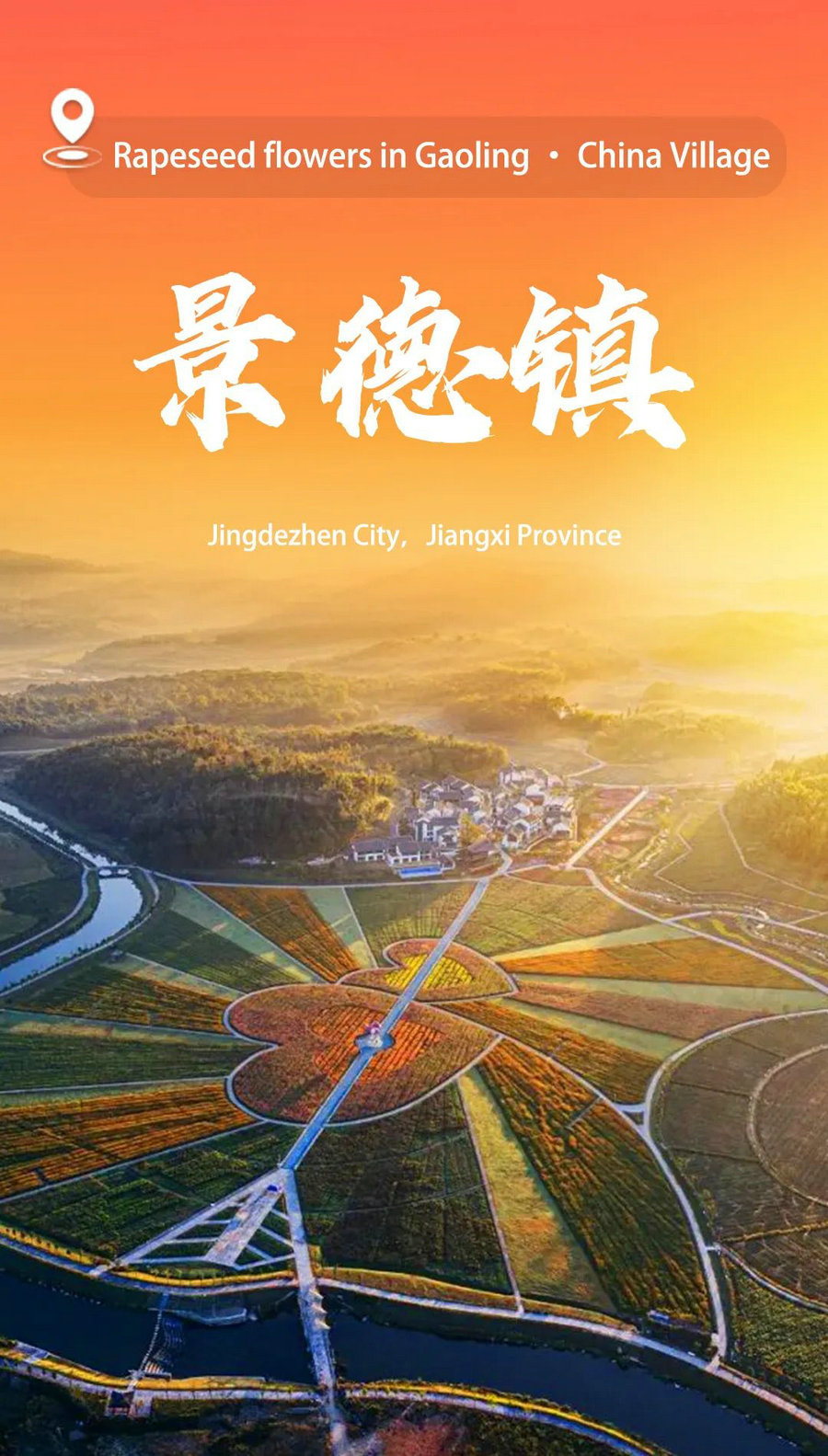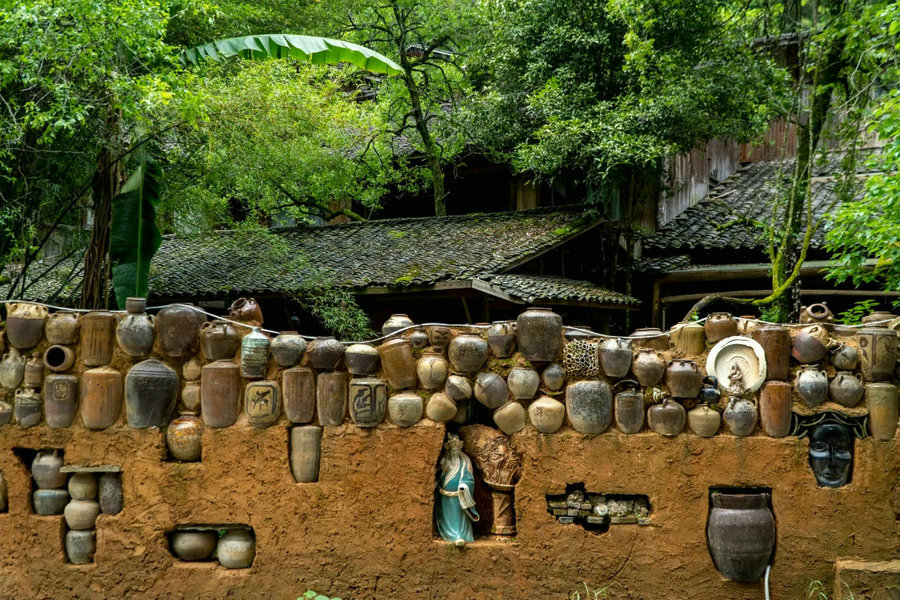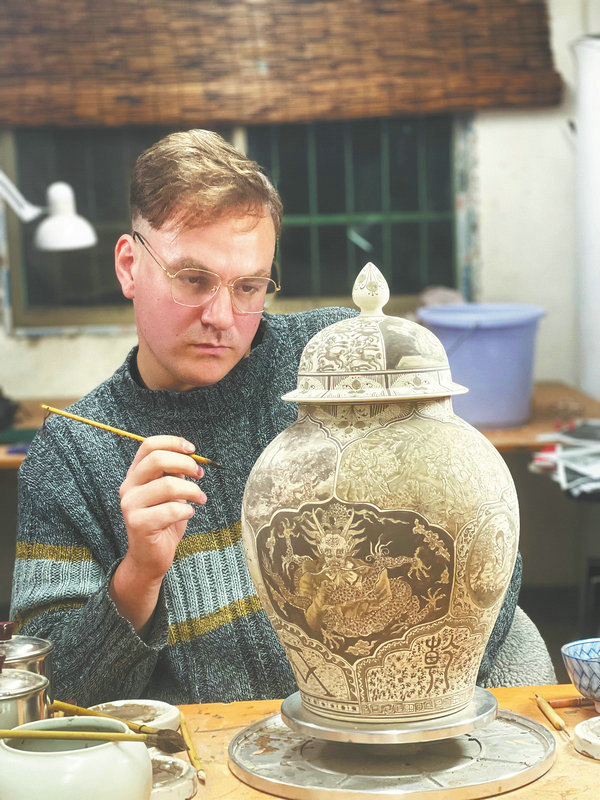
Spanish artist Jaume Ribalta CHINA DAILY
City strives to become global ceramic art hub revolutionized by digital economy.
Jaume Ribalta is no stranger to early mornings. Rising before 8 am, the Spanish artist begins his day by tending to his home and taking his dog for a brief stroll.
Then, he heads to his studio in Jingdezhen, a quaint city nestled in the mountains of China's Jiangxi province. Known as the porcelain capital of China, Jingdezhen has played a crucial role in refining porcelain-making techniques throughout history.
Ribalta's connection with Jingdezhen began five years ago when he embarked on a journey to explore the traditions and craftsmanship of Chinese porcelain.
"My initial foray into creating porcelain in China was during the spring and summer festivals in Jingdezhen. It was here that I extensively used cobalt blue in my works. Perhaps it was the potent and intense nature of this color that propelled me to seek its origin, and thus, I was compelled to travel to Jingdezhen, the very heart of porcelain," Ribalta said.
Upon visiting Jingdezhen for the first time in 2018, Ribalta felt a sense of boundless possibility and an invitation to immerse himself in Chinese culture and ceramics.
With these thoughts in mind, he made the decision to settle down in Jingdezhen in August last year. Renting a modest countryside home near a river and the mountains in Xianghu — a village just 15 minutes from Jingdezhen — Ribalta transformed his dwelling into a personal sanctuary, workshop and a small exhibition space.
"I took all my savings and, along with my dog, ventured into the unknown. But now, I feel like I am living in a dream," he said.
Jingdezhen, with more than 2,000 years of ceramic-making history, has reached the pinnacle of porcelain craftsmanship having been designated as an official and royal kiln in China.
The city boasts a staggering 8,300 ceramic enterprises and more than 9,800 self-employed ceramic practitioners.
About one-tenth of the population thrives in related businesses, making Jingdezhen a hub for world-renowned ceramic artistry that continues to captivate foreign artists such as Ribalta.
According to incomplete statistics, there are about 30,000 Chinese and foreign artists residing in Jingdezhen, including an estimated 5,000 foreign artists. Every October, thousands of ceramic industry professionals gather for the annual Jingdezhen China International Ceramic Fair, seeking out collaborations and inspiration.
Many artists have had a deep connection with Chinese porcelain long before setting foot in Jingdezhen.

Swedish multimedia artist Torsten Jurell CHINA DAILY
Torsten Jurell, a Swedish multimedia artist based in Sweden and China, remembers his early affinity for porcelain during his childhood.
"My father was a police officer, but he had a passion for repairing Chinese porcelain. I vividly recall seeing him seated at the kitchen table, skillfully mending broken pieces with a diamond-tipped tool," Jurell said.
"Our home was scattered with bowls and plates adorned with stunning patterns and images. My father's work allowed our not-so-wealthy family to amass an extensive collection of Chinese porcelain," the 72-year-old artist said.
Although Jurell's father never visited Jingdezhen, he imparted to his son a comprehensive understanding of China's rich history, from the Tang Dynasty (618-907) to the Song Dynasty (960-1279), and anecdotes from the reign of Emperor Kangxi of the Qing Dynasty (1644-1911).
He later learned that Sweden had engaged in porcelain trade with Jingdezhen for nearly 300 years. "Swedish porcelain trade with Jingdezhen dates back to the 18th century," he said.
China's overseas ceramic trade has a longstanding history. During the Tang Dynasty, China began exporting ceramics to Asian and African countries, followed by European countries during the Ming (1368-1644) and Qing dynasties.
In the 18th century, a significant amount of Chinese porcelain reached Sweden through the Swedish East India Company, enrapturing the Swedish populace. Swedish collectors began studying and acquiring Chinese ceramics, encompassing not only the exported porcelain of the time but also earlier pottery predating the Qing Dynasty.
In 1739, a ship bearing the same name as Jurell's hometown, Gothenburg, set sail for China, carrying Swedish black lead and cotton. It returned to Sweden laden with tea, silk and porcelain.
Motivated by the connection between his hometown and Jingdezhen, as well as his passion for ceramic art, Jurell embarked on his journey to China.
"I wanted to channel my tribute to my parents through ceramic art, although I had no prior knowledge of creating ceramics," he said.
In 2007, Jurell set foot in China for the first time and later secured a studio among local artisans at the Jingdezhen Sculpture Factory in 2011.
"I discovered that everything I needed was accessible. The realm of possibilities became endless," he said.
For artists like Ribalta and Jurell, Jingdezhen represents much more than a center for porcelain-making and ceramics. It serves as a nourishing environment for artistic growth and development.
"I've learned from a diverse array of teachers, including kiln masters and mold masters," Ribalta said. "Jingdezhen accommodates every form of artistic expression.
"In a way, I am an ambassador for Jingdezhen ceramics. I am a Jingpiao (Jingdezhen drifters, referring to nonlocals working and living in Jingdezhen), and as I stand here before you today, I represent the power of culture. It is also a testament to what my father achieved while holding Jingdezhen porcelain in his hands," said Jurell.
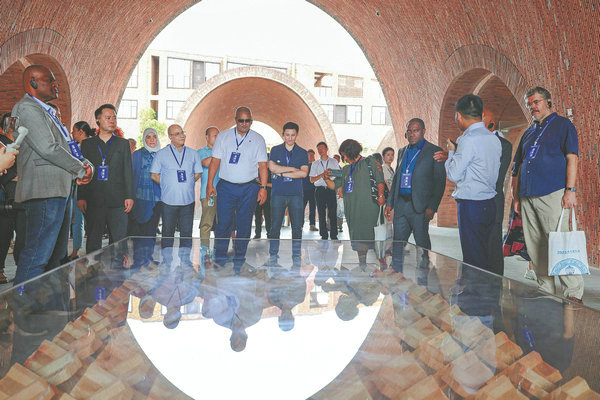
Diplomatic envoys to China from various countries, including Cyprus, Italy, Jordan, Kazakhstan, Sri Lanka, Thailand and Zimbabwe, visit the Jingdezhen Imperial Kiln Institute in Jingdezhen, Jiangxi province, on June 17, 2023. LIU LIXIN/CHINA NEWS SERVICE
Pushing boundaries
From the Sanbao International Ceramic Art Valley to the Jingdezhen Sculpture Factory, international artists come together in Jingdezhen to explore, collaborate and push artistic boundaries. These interactions contribute to the ever-increasing internationalization of this thousands-year-old porcelain capital.
Nick Vest, a 31-year-old artist from Pennsylvania in the United States, also feels a strong connection to Jingdezhen.
Aspiring to become a sculptor, Vest arrived in Jingdezhen in 2016 and planted the roots of his artistic career in the city. Over the years, he has held more than 25 ceramic exhibitions across nine different countries, with his most recent exhibition taking place at the Jingdezhen Sculpture Factory.
"I hope to spend more time in China, especially in Jingdezhen. The artistic atmosphere here is so vibrant, and the fusion of art and life is more pronounced," Vest said. "I have many friends at the sculpture factory, and we have established a studio called 'Menlo', which bears a distinctly Chinese name."
Vest and his fellow artists at the sculpture factory organize, curate and participate in various ceramic art exhibitions. They also invite ceramic artists and enthusiasts from around the world to embark on trips to Jingdezhen, where they engage in ceramic design, creation and exhibitions.
These international ceramic cultural exchanges not only enrich the artistic landscape of Jingdezhen Sculpture Factory but also infuse the traditionally symbolic Eastern sculptures with elements of realism from the West, elevating the overall artistic atmosphere of Jingdezhen, local media outlets quoted city officials as saying.
In 2019, Jingdezhen was approved as a national ceramic culture inheritance and innovation pilot zone. This has brought new opportunities, Hu Xuemei, mayor of Jingdezhen, said.
In Zhushan district where many Jingpiao reside, ceramic art labor unions have been established and as well as other institutions aimed at providing diverse activities and services to Jingpiao from both domestic and international backgrounds, enhancing their sense of belonging, Hu said.
Jingdezhen is not only seen as a place of inspiration for foreign ceramic artists, but it has also brought them new opportunities for commercialization.
Many foreign potters in Jingdezhen now rely on the internet to sell their artwork. In recent years, livestreaming has become a booming industry in the city.
According to the Taoxichuan Ceramic Art Avenue, a giant ceramic art base in Jingdezhen, it had 6,000 merchants and 10,000 livestream hosts as of February. In 2021, it recorded sales of 3.06 billion yuan ($418.62 million).
An online flagship store for Jingdezhen porcelain has also been launched on Taobao, China's major e-commerce platform. The store aims to boost sales and expand the market by bringing together famous Jingdezhen ceramics brands, Hu said, adding that it will become the first choice for purchasing authentic Jingdezhen ceramics.
In terms of creating an international hub for ceramic cultural exchange and cooperation, Jingdezhen promotes Chinese culture and storytelling to the world, Hu said, referencing a video that went viral on TikTok last year, featuring a tiny vase with a diameter of 5 millimeters created by a ceramic artist based in Jingdezhen.
The video attracted more than 100 million viewers, and overseas netizens were amazed by the exquisite ceramic craftsmanship, calling it "China at your fingertips". It showcased the popularity of ceramic culture, Hu said.
"In the future, we will continue to create a more refined 'national trend' and 'nationalstyle' artworks to express international connectivity, utilizing China's lowercase 'china' ceramic culture to tell the captivating story of uppercase 'CHINA' to the world," said the mayor in an interview with The Paper.
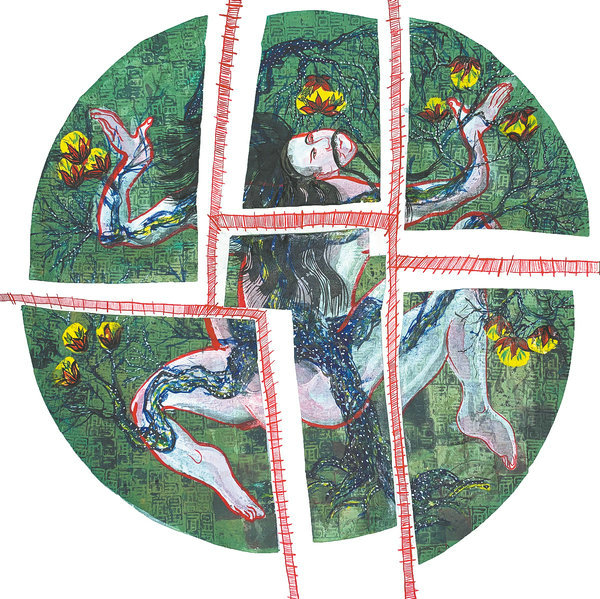
Spanish artist Jaume Ribalta's work CHINA DAILY
People-to-people exchanges
Foreign ceramic artists have contributed to the cultural and people-to-people exchanges between Jingdezhen and other countries.
Working as a product designer and artist, Ribalta has embarked on a research and artistic creation project at the Jingdezhen Ceramic Institute, focusing on the applied painting traditions in Chinese and Catalan ceramics. This opportunity arose through the international artist residency program at the institute.
"I hope to continue contributing my small grain of sand in China and to serve as a bridge that connects both Chinese and Spanish cultures. Although geographically distant, these territories reside close to my heart," Ribalta said.
"It's only interactions that make us better, and we are welcoming more and more exchanges, especially after the COVID-19 pandemic. With borders opening to each other, there should be more international projects to connect us."
Meanwhile, just like centuries ago, Jurell is bringing modern Jingdezhen ceramics back to Sweden.
"I am currently working on an exhibition in Stockholm, set to open in spring 2024 and run throughout the summer," Jurell said. "The exhibition will showcase a collection of Chinese porcelain, featuring a beautifully crafted qilin (a mythical animal in China)."
During the past three years of the pandemic, when Jurell was unable to go back to Jingdezhen, he had been working on a book titled The Fish in the Sky — A Story About Broken Porcelain, About Love and Art.
With the book, created based on his experience in Jingdezhen and set to be published next year, and the exhibition, Jurell hopes to be a bridge in the understanding of Chinese culture and thinking.
"I hope to present old China in a new light to a fresh audience, while also showcasing the contemporary ceramic culture of China," he said.
Contact the writers at zhaoruinan@chinadaily.com.cn
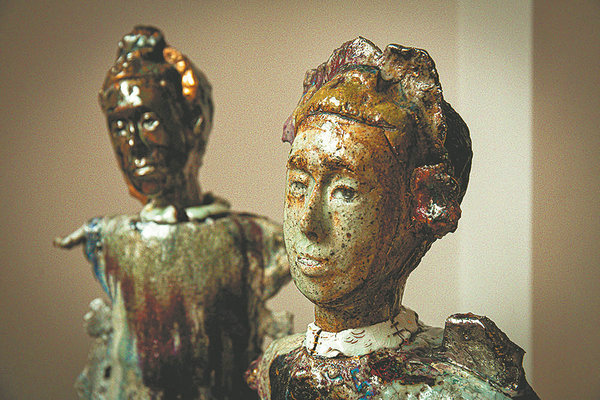
Swedish multimedia artist Torsten Jurell's work CHINA DAILY

